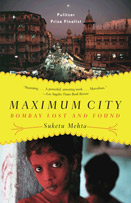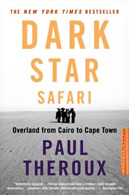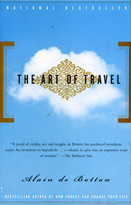
Sunday, March 2, 2008
Saturday, March 1, 2008
R.I.P. Sony CyberShot
The timing is perfect. Weirdly perfect, in fact--our camera finally died on us, five days after getting home.
As some of you know, our camera got a little taste of Mediterranean saltwater last October, and since then we've had it on an informal "death watch", waiting to see when corrosion would get the best of it. We'd noticed a gradual decline in picture quality over the past few months--it became more and more difficult to get things like focus and exposure correct. We found ourselves taking multiple shots of a subject, hoping at least one would be sharp and in focus.
Finally back home, it gave up completely. We're not able to shoot much of anything anymore--notice Jacqueline's hand:

So long li'l CyberShot, you served us well :-(
As some of you know, our camera got a little taste of Mediterranean saltwater last October, and since then we've had it on an informal "death watch", waiting to see when corrosion would get the best of it. We'd noticed a gradual decline in picture quality over the past few months--it became more and more difficult to get things like focus and exposure correct. We found ourselves taking multiple shots of a subject, hoping at least one would be sharp and in focus.
Finally back home, it gave up completely. We're not able to shoot much of anything anymore--notice Jacqueline's hand:

So long li'l CyberShot, you served us well :-(
Tuesday, February 26, 2008
Gung hee fat choy

Hello everybody, we made it home in one piece.
We were just in time to check out the Chinese New Year festivities (I like to imagine it as our Homecoming Parade;-) and it was a good reintroduction to the city. Strangely giddy, we stood out in the freezing rain in Union Square, waving and clapping at the floats going by; marching bands were dressed in giant rain ponchos and even the big dragons were covered in clear plastic bags for protection. We worked our way over to the Buddha bar on Grant St and drank Anchor Steam as firecrackers blew up right outside the door. Ahh, home.
For the most part SF looks pretty much like we left it. The past six months have raced by, and in many ways it feels like we've barely been gone. Some people have asked us if we've gained any great insights or been changed by the trip.... um, well, yes and no (sorry to be so cryptic) ...I think those kinds of topics are far less interesting on a blog than they are over drinks, over the phone late at night or at some kind of dinner party... So, maybe later:-)
We're slowly adjusting to life at home...we've been going through piles of mail, reactivating cellphones and subscriptions, and getting ourselves reaquainted with the contents of our closets, cupboards and drawers. It's a pleasure wearing our "real" clothes again, and not the same REI/quickdry/tourist gear over and over. It might sound odd, but we're very happy to be cooking our own food in our own kitchen again. Oh yeah and doing our own laundry in our own building is pretty satisfying too.
We're not quite done with the blog yet; I'll be posting photos from Argentina and Ecuador soon, maybe some additional ones from Chile and New Zealand (I was also thinking of writing a post or two about the logistics of the trip, fill in some blanks, we'll see..)
Sunday, February 17, 2008
Polynesian tango

Every February Easter Island hosts the Tapati Festival, consisting of numerous Polynesian cultural performances and competitions. It's Easter Island's single biggest tourist draw (en route, we noticed the festival schedule and brochure were placed in our airline seat pockets). Luckily we had made our hotel reservations last July: almost every room on the island was booked for the month.
Competitions (surfing, turtle races etc) were held during the day, but in keeping with Hanga Roa's semi-nocturnal lifestyle, dances and performances didn't take place until well after 10pm. I fought my latenight exhaustion and wandered down to the fairgrounds on two separate nights. The main stage was decked out in classic Polynesian kitch (and anyone who knows me, knows I'm a complete sucker for Polynesian kitch). Looking very Ferdinand & Imelda Marcos, the two emcees arrived with great fanfare. Imelda was decked out in a glowing chartreuse mumu and feather boa; Ferdinand wore a classic tropical combo of white slacks/hawaiian shirt with a massive feather headdress. Throughout the night they addressed the exuberant crowd first in Rapanui, then in Spanish. A few cursory sentences in English were offered to those of us gringos in attendance.
It was impressive seeing dozens of people on stage, drumming clapping and stomping, performing variations of the Hakka in perfect synchronization. It was also interesting seeing the degree to which South American music had influenced the local culture: the island-wide tango competition(!) was a big deal to the locals. The dancers' moves were formal/traditional tango, and though the music's tempo and rhythm were perfect for the tango-dancing couples, the instrumentation (guitar etc) was explicitly Hawaiian. Islanders had also adopted the bandoneon; this accordion-like instrument gave a strange zydeco feel to many of the dances and musical numbers.
Relaxed in the middle of nowhere
The flight from Santiago to Easter Island takes a little over four-and-a-half hours. Compared to the many long-hauls we've been on lately, it didn't seem like much time at all: eat, nap, watch a movie, and we're there. No problem. It was easy for me to imagine Easter Island somewhere right off the coast of Chile, the same way Hawaii is always shown just west of Tijuana on US maps. But it turns out Rapa Nui is a long way from South America--it’s halfway to Tahiti, and it’s supposedly the most remote inhabited island in the world.


The first impressions we got were of a pristine, primitive Hawaii. LanChile is the island's sole carrier, and it only operates a twice-weekly flight (as a stopping point between Tahiti and Santiago); the airport is all of two large rooms, including the open-air baggage claim. The tourist industry, such as it is, is pretty low profile. Though there's a luxury hotel somewhere on the island, every other hotel is of the informal family-owned variety (ten rooms or less, eat breakfast & socialize with the owners in their kitchen, etc).
Our small hotel was owned by a Rapanui woman and her Australian husband. I mentioned to them how I felt like I was in a Polynesian time capsule; they told me they have many Hawaiian visitors who believe Easter Island closely resembles the pre-WW II, pre-statehood Hawaii.
The Rapanui language, similar to both Hawaiian and Maori, is in common usage and seems to be preferred to Spanish (both Rapanui and Spanish are official languages). Most streets here are potholed dirt roads; walls and fences are made of lava rock; corrugated metal roofs are red with rust and obscured by giant palm tree leaves. Chickens and horses wander the streets (we saw a few near-accidents between cars and horses); the horses are relaxed and obviously well cared-for; everyone knows which animal belongs to which ranch so nobody seems to bother locking them up.





The island’s only town, Hanga Roa, shuts down during the late afternoon heat (they've happily adopted Chile’s "siesta schedule") but comes alive later with bustling cafes and restaurants, busy till way after midnight. The monumental moai heads are everywhere, in various states of decay or restoration. They're an incredible & intimidating sight, an unexpected presence as you come around a corner or over a hill. But they soon become strangely comforting and familiar, like benevolent sentries looking out over the island. Each one takes on it's own personality; they're endearing mascots to the locals.




The first impressions we got were of a pristine, primitive Hawaii. LanChile is the island's sole carrier, and it only operates a twice-weekly flight (as a stopping point between Tahiti and Santiago); the airport is all of two large rooms, including the open-air baggage claim. The tourist industry, such as it is, is pretty low profile. Though there's a luxury hotel somewhere on the island, every other hotel is of the informal family-owned variety (ten rooms or less, eat breakfast & socialize with the owners in their kitchen, etc).
Our small hotel was owned by a Rapanui woman and her Australian husband. I mentioned to them how I felt like I was in a Polynesian time capsule; they told me they have many Hawaiian visitors who believe Easter Island closely resembles the pre-WW II, pre-statehood Hawaii.
The Rapanui language, similar to both Hawaiian and Maori, is in common usage and seems to be preferred to Spanish (both Rapanui and Spanish are official languages). Most streets here are potholed dirt roads; walls and fences are made of lava rock; corrugated metal roofs are red with rust and obscured by giant palm tree leaves. Chickens and horses wander the streets (we saw a few near-accidents between cars and horses); the horses are relaxed and obviously well cared-for; everyone knows which animal belongs to which ranch so nobody seems to bother locking them up.





The island’s only town, Hanga Roa, shuts down during the late afternoon heat (they've happily adopted Chile’s "siesta schedule") but comes alive later with bustling cafes and restaurants, busy till way after midnight. The monumental moai heads are everywhere, in various states of decay or restoration. They're an incredible & intimidating sight, an unexpected presence as you come around a corner or over a hill. But they soon become strangely comforting and familiar, like benevolent sentries looking out over the island. Each one takes on it's own personality; they're endearing mascots to the locals.


Monday, February 11, 2008
Valparaíso
Flickr won't play nice with me today, so instead of a slideshow I'm just posting some photos directly--









Valparaíso is an unofficial "sister city" to San Francisco. Since it was one of the last stops for boats on the way to SF during the gold rush, the two cities had extensive social & economic ties; many Chileans ended up in SF (several old prominent bay area families have Chilean roots), and likewise quite a few Americans & Europeans ended up in Valparaíso. There are almost as many German & Irish surnames here as there are Spanish ones.
There are also some very obvious physical similarities; we often felt like we were strolling some of the seedier parts of the Mission or Potrero Hill. Foggy and overcast (at least while we were there), Valparaíso's hills are a jumble of victorian homes, corrugated metal lean-tos, stray cats and scrub grass. Like SF, Valparaíso has a high concentration of design studios, art galleries & hip restaurants; in lieu of cable cars, there are many rickety & crumbling funiculars that take people up and down the steep inclines.
Needless to say, we felt right at home.









Valparaíso is an unofficial "sister city" to San Francisco. Since it was one of the last stops for boats on the way to SF during the gold rush, the two cities had extensive social & economic ties; many Chileans ended up in SF (several old prominent bay area families have Chilean roots), and likewise quite a few Americans & Europeans ended up in Valparaíso. There are almost as many German & Irish surnames here as there are Spanish ones.
There are also some very obvious physical similarities; we often felt like we were strolling some of the seedier parts of the Mission or Potrero Hill. Foggy and overcast (at least while we were there), Valparaíso's hills are a jumble of victorian homes, corrugated metal lean-tos, stray cats and scrub grass. Like SF, Valparaíso has a high concentration of design studios, art galleries & hip restaurants; in lieu of cable cars, there are many rickety & crumbling funiculars that take people up and down the steep inclines.
Needless to say, we felt right at home.
Sunday, February 3, 2008
Where the hell am I ?
The travel-related vertigo is starting to kick in. Immediately after arriving at our Santiago hotel, we both fell down on top of the bed covers, exhausted from our long flight. I was woken from a DEEP sleep by a knock on the door (turn-down service or mini-bar inventory or something, I never figured it out); in my semi-conscious state I stumbled off of the bed and toward the door; for a few seconds I was convinced I was still in New Zealand and I couldn't figure out why I was being spoken to in Spanish.
Friday, February 1, 2008
Slideshow: Franz Josef & Fox Glaciers
For larger photos click here; no captions as yet.
We took a helicopter tour over Franz Josef Glacier & Mount Cook; we landed on top of Fox Glacier long enough to have a quick snowball fight.
The pilot couldn't resist showing off with some reckless dives and turns around the mountain sides. We were happy to learn that our helicopter can bank at a 50-degree angle without losing power or control:-)
We took a helicopter tour over Franz Josef Glacier & Mount Cook; we landed on top of Fox Glacier long enough to have a quick snowball fight.
The pilot couldn't resist showing off with some reckless dives and turns around the mountain sides. We were happy to learn that our helicopter can bank at a 50-degree angle without losing power or control:-)
Subscribe to:
Posts (Atom)




